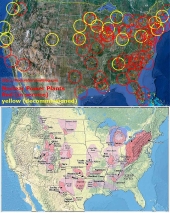A guy on Youtube made a excellent set of videos on how to make your own PV panels.
[youtube]http://www.youtube.com/watch?v=hNH2YGzwznI[/youtube]
[youtube]http://www.youtube.com/watch?v=tEYtfNOML8c&feature=relmfu[/youtube]
[youtube]http://www.youtube.com/watch?v=sRKphzl7PBE&feature=relmfu[/youtube]
[youtube]http://www.youtube.com/watch?v=PfCeknwkG4M[/youtube]
http://www.youtube.com/watch?v=0UM3DgyG_BQ I haven't made any large panels yet but the videos are the best how to videos on the topic i have ever seen. Good luck with your project.








